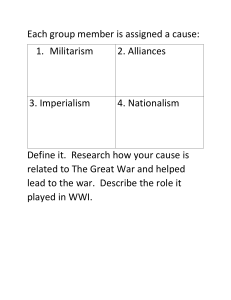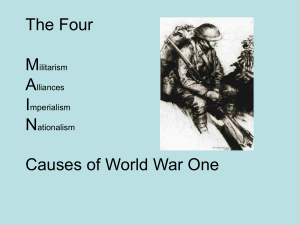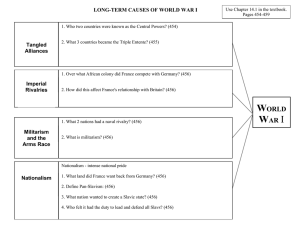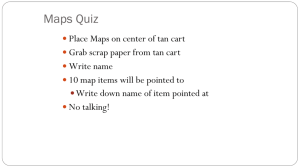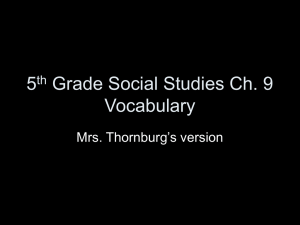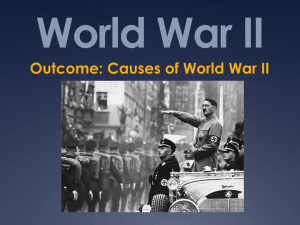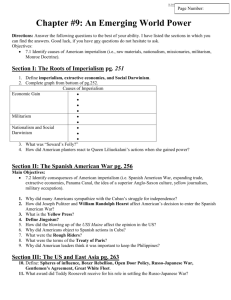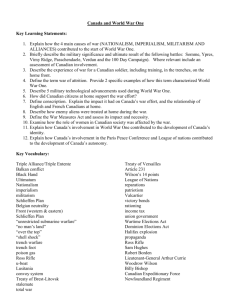WWI Study Guide: Causes, Plan, Vocabulary | 9th Grade
advertisement
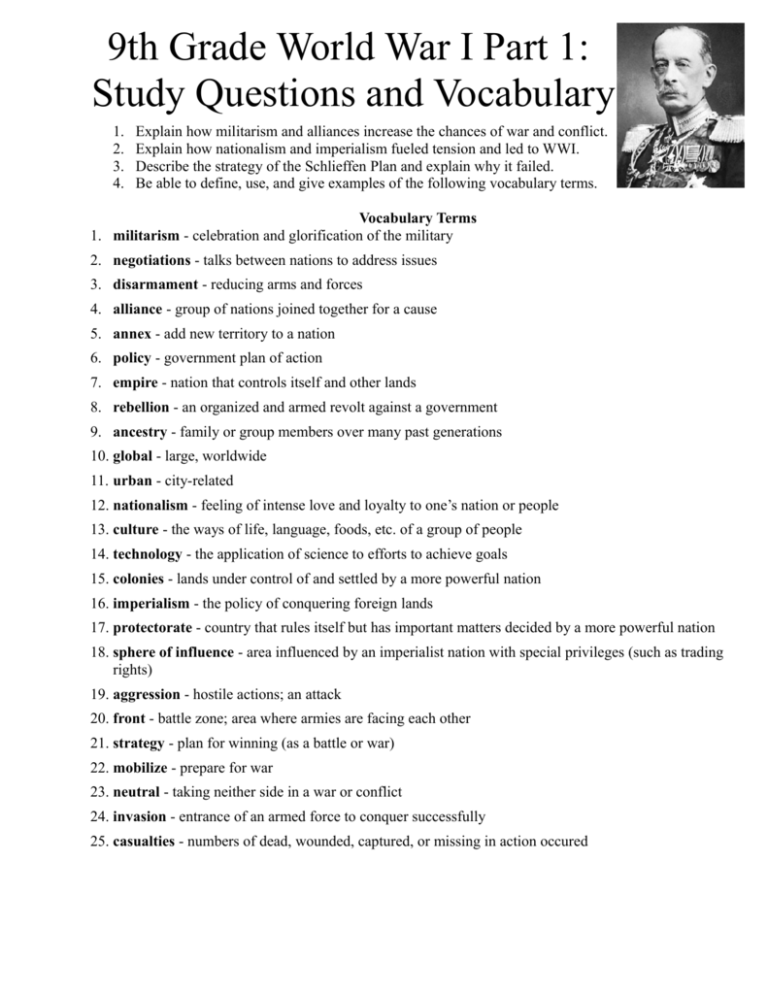
9th Grade World War I Part 1: Study Questions and Vocabulary 1. 2. 3. 4. Explain how militarism and alliances increase the chances of war and conflict. Explain how nationalism and imperialism fueled tension and led to WWI. Describe the strategy of the Schlieffen Plan and explain why it failed. Be able to define, use, and give examples of the following vocabulary terms. Vocabulary Terms 1. militarism - celebration and glorification of the military 2. negotiations - talks between nations to address issues 3. disarmament - reducing arms and forces 4. alliance - group of nations joined together for a cause 5. annex - add new territory to a nation 6. policy - government plan of action 7. empire - nation that controls itself and other lands 8. rebellion - an organized and armed revolt against a government 9. ancestry - family or group members over many past generations 10. global - large, worldwide 11. urban - city-related 12. nationalism - feeling of intense love and loyalty to one’s nation or people 13. culture - the ways of life, language, foods, etc. of a group of people 14. technology - the application of science to efforts to achieve goals 15. colonies - lands under control of and settled by a more powerful nation 16. imperialism - the policy of conquering foreign lands 17. protectorate - country that rules itself but has important matters decided by a more powerful nation 18. sphere of influence - area influenced by an imperialist nation with special privileges (such as trading rights) 19. aggression - hostile actions; an attack 20. front - battle zone; area where armies are facing each other 21. strategy - plan for winning (as a battle or war) 22. mobilize - prepare for war 23. neutral - taking neither side in a war or conflict 24. invasion - entrance of an armed force to conquer successfully 25. casualties - numbers of dead, wounded, captured, or missing in action occured Brief Answers to Study Questions (questions in bold) 1. Explain how militarism and alliances increase the chances of war and conflict. A. Militarism, the glorification and build-up of military forces, can raise suspicions and fear among enemies and usually spurs build-ups in response. B. In Europe leading up to World War I the nations divided into two main alliances, creating a dangerous situation. 1. Any conflict between two opposing nations would pull in the rest. 2. The tensions and weapons made a war likely, if not inevitable. 2. Explain how nationalism and imperialism fueled tension and led to WWI. A. Nationalism was a factor in the Pan-Slavic movement of the late 1800’s. 1. Serbia and Russia wanted to unite all Slavs under one nation, but since they were under the rule of other empires (Austria-Hungary and the Ottomans), this led to added tension and bitterness. B. In addition the age of imperialism furthered conflicts because of clashes over various colonial claims. 3. Describe the strategy of the Schlieffen Plan and explain why it failed. A. Germany’s strategy was to quickly take France out of the war by surprise attack through neutral Belgium. B. Their hope was to avoid a two-front war by eliminating threats from the west and then focus attention on Russia in the east. C. However the plan backfired, because Great Britain entered the war in response to the German invasion of a neutral country.
